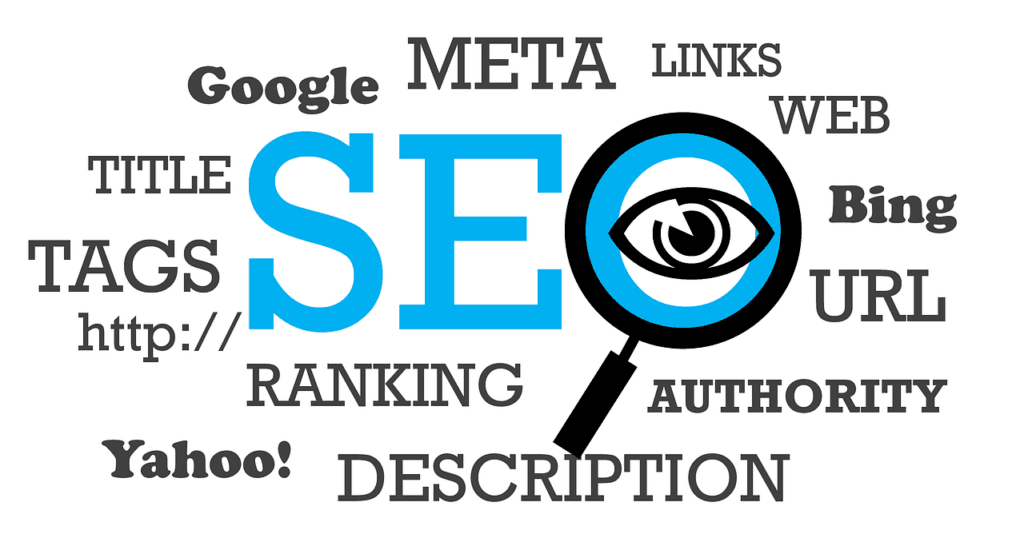(This Article has been revised, edited and added to, by Poulomi Chakraborty.)
Tax season, often considered the most daunting time for individuals and businesses alike, sees a surge in online searches related to tax preparations, refunds, and guidelines. For tax professionals, this season presents a unique opportunity. By leveraging SEO strategies specifically tailored for tax preparation websites, professionals can ensure that their services stand out amid the digital clutter. This article serves as a guide to navigate the confluence of taxation and digital optimization.
The Digital Tax Landscape: Understanding the Stakes

The transformation of tax services from traditional in-person consultations to digital platforms offers a unique set of challenges and opportunities. It’s essential to navigate this landscape with a strategic mindset, leveraging the latest technologies and trends to ensure your service remains relevant, accessible, and top-of-mind for potential clients.
The Shift to Online Tax Queries
With changing times and technology, an increasing number of people are searching for tax-related information and services online. This digital shift underscores the importance of having a robust online presence for tax professionals.
The Competitive Edge: Standing Out Amidst Tax Professionals
The tax domain is crowded. Numerous websites offer similar services, making differentiation crucial. SEO isn’t just about being seen; it’s about being noticed and chosen by potential clients.
Embracing Technological Innovations
The advent of artificial intelligence (AI) and machine learning (ML) in the tax sector cannot be overlooked. These technologies have the power to revolutionize how tax professionals approach SEO, from automating keyword research to personalizing user experiences. For startup founders, investing in AI-powered SEO tools can provide insights into client behaviors, predict trends, and optimize content dynamically, ensuring your website adapts to the ever-changing digital environment.
Furthermore, blockchain technology promises to enhance security and transparency in online transactions, a critical concern for tax preparation services. Demonstrating your website’s integration with secure blockchain protocols can significantly boost client trust and differentiate your service in a crowded market.
Harnessing the Power of Data Analytics
In the digital tax landscape, data is king. The strategic collection and analysis of data from your website and social media platforms can offer invaluable insights into your audience’s needs and preferences. Startups should focus on developing a data-driven SEO strategy that not only targets the right keywords but also aligns with the specific interests and behaviors of potential clients.
Utilizing advanced analytics tools to track user engagement, conversion rates, and customer journey maps will enable you to refine your content and SEO tactics continually. This approach ensures your website remains highly relevant and engaging to your target audience, maximizing the chances of conversion from visitor to client.
Building a Comprehensive Online Presence
For tax preparation startups, having a website is just the beginning. The digital tax landscape demands a comprehensive online presence that extends across multiple platforms. Engaging with potential clients through professional networks like LinkedIn, educational webinars, and interactive social media campaigns can significantly enhance your visibility and brand authority.
Strategic partnerships with financial influencers and thought leaders can also amplify your reach, providing an opportunity to tap into established audiences interested in taxation and financial planning. These collaborations should be carefully chosen to align with your brand values and client demographics, ensuring a synergistic relationship that benefits both parties.
Prioritizing User-Centric Design and Accessibility
In today’s fast-paced digital world, user experience (UX) plays a pivotal role in the success of any online service. For tax preparation websites, this means creating a platform that is not only informative but also easy to navigate and accessible to all users, including those with disabilities. Implementing responsive design, clear navigation menus, and accessibility features such as screen reader compatibility and keyboard navigation options are essential components of a user-centric website.
Additionally, ensuring your content is easily digestible and actionable for the layperson can set your service apart. Complex tax concepts and jargon should be simplified or accompanied by clear explanations, making your website a valuable educational resource for clients.
Leading with Innovation and Insight
As we navigate the digital tax landscape, the intersection of technology, data analytics, and user-centric design emerges as the foundation for success. For startup founders in the tax preparation sector, the opportunity to innovate and lead with insightful, strategic content has never been greater. By embracing technological advancements, harnessing the power of data, expanding your online presence, and prioritizing accessibility, your website can rise above the digital clutter.
This strategic approach not only attracts traffic but also builds trust, credibility, and lasting relationships with your clients, ensuring your startup’s growth and success in the competitive tax preparation market.
Laying the Groundwork: SEO Essentials for Tax Websites

In the realm of tax preparation, laying a solid SEO foundation is not just about ticking boxes; it’s about crafting a strategic approach that aligns with your startup’s goals, audience needs, and the competitive landscape. This section expands on the critical SEO essentials, providing startup founders with advanced strategies to elevate their tax website’s presence and performance.
Keyword Analysis: Targeting Tax-Specific Queries
Before delving into content creation, understanding what potential clients are searching for is paramount. Terms like “tax deadlines” or “last-minute tax tips” spike during tax season. By identifying and integrating these seasonal keywords, you can align your content with current demand.
Specific services such as “corporate tax consultation” or “individual tax return services” cater to niche audiences. Targeting such terms ensures your content reaches those specifically looking for your expertise.
User Experience: The Pillar of Retention
A visitor landing on your site needs information swiftly and efficiently. A clean website layout, easy navigation, and fast loading times play pivotal roles in retaining potential clients. With an increasing number of users accessing websites via mobile devices, ensuring your tax preparation site is mobile-optimized can make a significant difference.
Integrating Advanced Keyword Research Techniques
The cornerstone of any successful SEO strategy is thorough keyword research. Beyond identifying seasonal and service-oriented keywords, tax startups should explore long-tail keywords and user intent to capture a wider audience. Advanced techniques such as competitor keyword analysis and the use of AI-driven SEO tools can uncover gaps in the market and opportunities to position your services uniquely.
By understanding the questions and concerns driving potential clients to search online, you can tailor your content to address these specific needs, improving your site’s relevance and search rankings.
Optimizing for Voice Search and Question-Based Queries
As voice search becomes increasingly popular, optimizing your tax website for conversational queries is essential. People tend to use natural language and complete sentences when using voice assistants, which means your content must adapt to this trend.
Incorporating question-based keywords and phrases into your headings and content, particularly in an FAQ section, can enhance your visibility in voice search results. This approach not only targets specific search queries but also positions your website as a helpful resource for potential clients.
Leveraging Schema Markup for Rich Snippets
Schema markup is a powerful tool that helps search engines understand the context of your website’s content, enabling the display of rich snippets in search results. For tax preparation websites, utilizing schema markup for articles, FAQs, and professional services can make your listings more eye-catching and informative, potentially increasing click-through rates. Implementing schema markup for reviews, star ratings, and price ranges of your services can also build trust and transparency before a user even visits your site.
Enhancing User Experience with Technical SEO
While much emphasis is placed on content, the technical backbone of your website is equally important. Ensuring fast page loading times, mobile optimization, and secure browsing via HTTPS are fundamental aspects of technical SEO that significantly impact user experience and search rankings. Moreover, a clean, organized site structure with a logical hierarchy and clean URLs facilitates easier navigation for both users and search engine crawlers, further boosting your SEO performance.
Developing a Content Strategy That Educates and Converts
Beyond targeting the right keywords, your content strategy should aim to educate your audience and guide them towards conversion. Creating comprehensive guides, case studies, and actionable advice that address common tax concerns can establish your website as an authoritative source in the tax preparation industry.
Content that resonates with your audience’s pain points, coupled with clear calls-to-action, can significantly improve engagement and conversion rates. Encouraging user-generated content, such as client questions or testimonials, can also enhance content authenticity and trustworthiness.
Crafting a Future-Proof SEO Strategy
In the ever-evolving field of SEO, staying ahead requires a combination of foundational best practices and innovative tactics. For startup founders in the tax preparation sector, understanding and implementing advanced keyword research, optimizing for voice search, leveraging schema markup, focusing on technical SEO, and developing a rich content strategy are crucial steps towards building a robust online presence. By adopting a holistic and strategic approach to SEO, your tax website can not only achieve higher rankings but also foster trust, credibility, and lasting relationships with your clients.
Content Strategies: Offering Value Beyond Numbers

In the digital age, content is not just king; it’s the currency of engagement and trust between tax preparation services and their potential clients. As a startup founder, understanding how to craft and leverage content that transcends basic expectations is crucial. This section delves deeper into innovative content strategies that can significantly enhance the value offered by your tax preparation website, ensuring it resonates with your audience and stands out in a competitive landscape.
Tax Blogs: Educate and Engage
Having a blog section dedicated to tax insights, updates, and advice can position you as an industry thought leader. Complex tax codes or guidelines can be simplified through infographics or visual aids. Not only does this make the information more digestible, but it also enhances user engagement.
Tax Calculators and Tools
Offering interactive tools, such as tax calculators or deduction finders, can provide immediate value to visitors, increasing the chances of them using your services. Detailed tax guides, which users can download after providing their email, can serve a dual purpose: offering value and building your email list for future marketing campaigns.
Cultivating Thought Leadership Through Insightful Analysis
The realm of tax is ever-evolving, with new regulations, policies, and strategies emerging regularly. Positioning yourself as a thought leader by providing insightful analysis and commentary on these changes can significantly elevate your brand’s authority. This involves going beyond surface-level advice to offer deep dives into how specific tax laws might affect various segments of your audience, including startups, small businesses, and individuals. Sharing these insights through long-form articles, white papers, or even video content can demonstrate your expertise and commitment to keeping your clients informed and prepared.
Leveraging Storytelling to Simplify Complex Tax Concepts
Taxation, by nature, is complex and often perceived as dry or daunting by many. Integrating storytelling into your content strategy can transform the way information is received and processed by your audience. Sharing real-life case studies, client success stories, or hypothetical scenarios can make complex tax concepts more relatable and understandable. This approach not only enhances engagement but also humanizes your brand, making your services more appealing to prospective clients.
Interactive Content: Engaging Users on a New Level
In the digital era, interactive content has emerged as a powerful tool to engage users, offering them a more dynamic and participatory experience. For tax preparation websites, this could include interactive tax planning scenarios, where users can input their own data to see potential tax savings or liabilities based on different strategies. Other ideas include gamification elements, such as tax trivia challenges that reward users with discounts or free consultations for high scores. These innovative content formats can significantly increase on-site time, encourage repeat visits, and foster a deeper connection with your audience.
Establishing a Multi-Channel Content Distribution Strategy
Creating valuable content is only half the battle; ensuring it reaches your target audience across multiple channels is equally important. A multi-channel content distribution strategy involves identifying where your potential clients spend their time online and tailoring your content format and messaging for each platform. This could mean repurposing a detailed tax guide into a series of blog posts, infographics, social media snippets, or even podcasts, each designed to capture attention and drive traffic back to your website. By diversifying your content distribution, you can broaden your reach, enhance brand visibility, and attract more qualified leads to your site.
Encouraging Community Engagement and User-Generated Content
Building a community around your tax preparation services can foster loyalty and enhance content vibrancy. Encourage your users to share their own experiences, questions, and insights on your platform. This can be facilitated through comment sections, forums, or social media groups. User-generated content not only enriches your content ecosystem but also provides valuable insights into your audience’s needs and preferences, enabling you to tailor your services and content more effectively.
Elevating Your Content Game
In the competitive landscape of tax preparation services, offering value beyond numbers through advanced content strategies can distinguish your startup from the rest. By cultivating thought leadership, leveraging storytelling, embracing interactive content, establishing a multi-channel distribution strategy, and encouraging community engagement, you can create a content-rich environment that educates, engages, and converts. These strategic initiatives require investment in time and resources but promise substantial returns in terms of brand authority, client engagement, and ultimately, business growth.
Building Trust: Prioritizing Credibility and Reliability
In the intricate world of tax preparation, where sensitive data and financial well-being are at stake, building a foundation of trust and credibility is paramount. For startup founders in this domain, it’s essential to not only meet but exceed the expectations of potential clients in demonstrating reliability and expertise. This section explores deeper strategies to cultivate trust and establish your startup as a reliable authority in the tax preparation industry.
Showcasing Credentials and Certifications
Prospective clients want to know they’re entrusting their finances to qualified professionals. Highlighting your team’s credentials, affiliations with tax bodies, or special certifications prominently on your site establishes authority.
Client Testimonials and Case Studies
Word-of-mouth, even in the digital realm, is invaluable. Incorporating genuine testimonials or detailed case studies can offer tangible proof of your expertise and the positive impact of your services. Taxation involves sensitive information. Displaying security badges, SSL certificates, and clear confidentiality policies can reassure visitors of the safety of their data.
Active Engagement through Webinars or Live Chats
Interactivity, especially during stressful tax seasons, can make a marked difference. Offering live chat support or conducting informative webinars can address immediate concerns and foster client trust.
Embedding Transparency in Every Interaction
Transparency is the cornerstone of trust. Ensuring that every piece of content, every service description, and every client interaction is rooted in honesty and openness sets a solid foundation for long-term client relationships.
This means being upfront about pricing, the scope of services, potential outcomes, and even limitations. Sharing the processes and methodologies behind your tax preparation services can demystify the experience for clients and help them feel more in control and informed about the decisions they are making.
Showcasing Expertise Through Educational Initiatives
Knowledge sharing is a powerful tool in establishing credibility. Beyond traditional blog posts or tax guides, consider hosting free educational workshops, seminars, or webinars that address common tax concerns or recent changes in tax legislation.
These initiatives can position your startup as not just a service provider but as an educational resource and advocate for financial literacy. Engaging directly with your audience in these settings also provides a platform to showcase your expertise in a tangible, interactive manner, further bolstering trust.
Creating a Seamless and Secure Client Experience
In an era where data breaches are all too common, demonstrating a commitment to security is non-negotiable. Beyond employing the latest in cybersecurity measures, it’s crucial to communicate these efforts to your clients.
This can include detailed explanations of your data protection policies, regular security updates, and tips for clients to protect their own financial information. Additionally, ensuring your website and client portals are intuitive and user-friendly reduces frustration and builds confidence in your professionalism and attention to detail.
Leveraging Social Proof and Community Endorsements
Social proof, in the form of client testimonials, reviews, and case studies, is incredibly persuasive. Strategically placing authentic, positive feedback across your website and social media can significantly influence potential clients’ perceptions.
Going a step further, engaging with local communities, professional organizations, and industry events can provide endorsements that resonate on a deeper, more personal level. These community connections not only enhance your credibility but also strengthen your local SEO presence, making your services more visible to those in your immediate area.
Committing to Ongoing Dialogue and Support
Building trust is not a one-time effort but a continuous process of engagement and support. Offering multiple channels for communication, including live chat, email, and phone support, ensures clients can reach you with their concerns at any time.
Regularly updating clients on tax changes, deadlines, and planning tips through newsletters or social media keeps them informed and engaged. This ongoing dialogue demonstrates your commitment to their financial well-being beyond the tax season, fostering a sense of loyalty and trust.
Cultivating a Trust-Centric Brand
For tax preparation startups, building trust and establishing credibility are as critical as the technical aspects of SEO or content creation. By embedding transparency into your operations, showcasing your expertise, prioritizing security, leveraging social proof, and maintaining an ongoing dialogue with clients, you can create a brand that stands for reliability and expertise. These strategies not only attract clients but also cultivate long-term relationships, ensuring your startup’s growth and sustainability in the competitive landscape of tax preparation services.
Outreach and Backlinking: Broadening Your Digital Footprint
For startup founders in the tax preparation industry, developing a nuanced outreach and backlinking strategy is pivotal for amplifying your digital presence and enhancing your SEO efforts. This strategy not only involves acquiring links but also establishing your brand as a credible authority in the tax domain. The following sections provide in-depth strategies to refine your outreach and backlinking efforts, ensuring they contribute significantly to your overall digital marketing objectives.
Collaborations with Financial Platforms
Engage with financial blogs, news outlets, or industry-specific platforms for guest post opportunities. This not only enhances your website’s backlink profile but also taps into established audiences within the financial niche.
Local SEO: Targeting the Nearby Clientele
For many tax professionals who offer in-person consultations, local clients are crucial. Ensuring your business is listed and optimized on platforms like Google My Business can direct local traffic to your services. Encouraging satisfied clients to leave reviews on platforms like Yelp or Trustpilot can bolster your reputation and improve local rankings.
Social Media Engagement
Beyond conventional SEO, being active on platforms like LinkedIn or Twitter, especially in professional circles, can drive traffic and offer networking opportunities. Sharing recent tax updates, insights, or even client success stories can boost online visibility.
Cultivating Strategic Partnerships for Mutual Growth
Building relationships with complementary businesses and platforms can create win-win scenarios, where shared audiences and expertise amplify the reach and credibility of both parties. Identify potential partners such as financial planning firms, legal advisors, and business consultants who share a client base that could benefit from your tax preparation services.
Through co-authored content, shared webinars, or joint promotional campaigns, you can establish strong links and referral traffic, enriching your backlink profile and extending your brand’s reach.
Leveraging Local Community Engagement for Authentic Links
Engaging with your local community can yield substantial SEO benefits beyond the immediate business advantages. Participate in community events, sponsor local charities, or offer free tax advice sessions to local businesses and individuals.
These activities not only generate goodwill but also lead to natural, high-quality backlinks from local organizations’ websites, news outlets, and event pages. Such locally anchored backlinks are invaluable for improving your local search rankings and establishing your brand as a pillar of the community.
Innovating Content Creation for Link Attraction
In the crowded online space, content that stands out is more likely to attract backlinks naturally. Invest in creating innovative, high-quality content that addresses unmet needs or presents tax information in novel ways.
This could include interactive tax calculators, visual infographics on tax-saving strategies, or comprehensive guides to new tax legislation. By offering resources that are both valuable and unique, you encourage other sites to link to your content as a reference, enhancing your site’s authority and relevance.
Engaging in Thought Leadership on Industry Platforms
Positioning yourself and your startup as thought leaders in the tax preparation field can significantly enhance your outreach and backlinking efforts. Contribute insightful articles, detailed analyses, and commentary on tax trends to reputable industry blogs, forums, and publications. By sharing your expertise on platforms that your target audience trusts, you not only gain valuable backlinks but also build a reputation as a go-to resource in the tax domain.
Maximizing the Impact of Social Media in Link-Building Strategies
While social media links themselves may not always directly influence search rankings, the visibility and engagement they generate can lead to more organic backlink opportunities. Actively share your content, engage with followers, and participate in relevant discussions across platforms like LinkedIn, Twitter, and Facebook. This increased visibility can attract the attention of bloggers, journalists, and content creators who may reference and link to your content in their own work.
A Holistic Approach to Outreach and Backlinking
Expanding your digital footprint through strategic outreach and backlinking is about much more than just acquiring links; it’s about building relationships, establishing authority, and creating content that naturally draws attention and engagement. By cultivating partnerships, engaging with local communities, innovating in content creation, contributing as thought leaders, and leveraging social media, tax preparation startups can develop a backlinking strategy that supports long-term SEO success and brand growth. This holistic approach not only enhances your digital presence but also solidifies your reputation as a trusted and authoritative voice in the tax preparation industry.

Related: Check out our free SEO suite

Analytics and Adaptation: Refining Your SEO Approach
In the competitive landscape of tax preparation, a dynamic and data-driven SEO strategy is not just beneficial; it’s essential. For startup founders, harnessing the power of analytics goes beyond mere number-crunching—it’s about gaining actionable insights to refine and adapt your SEO approach continually. This section delves into advanced tactics to leverage analytics for optimizing your tax preparation website’s SEO strategy, ensuring you stay ahead of the curve and meet your business objectives.
Monitoring Website Traffic and User Behavior
Utilizing tools such as Google Analytics provides insights into which strategies are yielding results and which areas need refinement. Beyond attracting visitors, the goal is to convert them into clients. Assessing where users drop off, or which calls-to-action are most effective, can fine-tune your approach to increase conversions.
Keeping Abreast of Tax Industry Trends
The tax world is dynamic. Regularly updating your content to reflect recent changes, court rulings, or government policies ensures your site remains relevant and a go-to resource for updated information. Allowing a space for visitors to provide feedback or pose questions can offer invaluable insights. It can highlight potential areas of improvement or content gaps that need addressing.
Implementing Comprehensive Analytics for In-depth Insights
To truly understand the effectiveness of your SEO strategy, you must look beyond surface-level metrics like page views or sessions. Implementing comprehensive analytics tools that track a variety of user behaviors and interactions on your site can provide a wealth of insights.
Consider tools that offer conversion tracking, bounce rate analysis, and heat mapping to see not just where users are coming from but how they engage with your content. Understanding these patterns can help you tailor your content, design, and user experience to better meet your audience’s needs and preferences.
Segmenting Your Audience for Tailored SEO Strategies
One size does not fit all when it comes to SEO. By segmenting your website’s audience based on demographics, behavior, or source, you can gain a clearer picture of how different groups interact with your site. This segmentation allows for more targeted and effective SEO tactics.
For instance, if analytics reveal that a particular segment is more likely to convert after reading specific types of content, you can prioritize creating more of that content. Similarly, if certain keywords are attracting high-quality traffic from a specific demographic, you can adjust your keyword strategy to further cater to that audience.
Leveraging A/B Testing to Optimize SEO Elements
In the quest for SEO optimization, A/B testing is a powerful tool. By systematically testing different versions of your web pages, content, and even meta descriptions, you can determine what resonates most with your audience and search engines.
This iterative process allows you to make data-backed decisions that can significantly improve your site’s performance. Whether it’s experimenting with different call-to-action phrasing or testing various headline formats, A/B testing provides the empirical evidence needed to refine your SEO approach effectively.
Integrating SEO with User Experience (UX) Design
SEO and user experience (UX) are intrinsically linked, and analytics can bridge the gap between them. Analyzing user behavior data can inform not only SEO strategies but also UX design decisions. If analytics indicate that users are abandoning your site from specific pages, it may signal a UX issue that needs addressing.
Conversely, pages with high engagement can offer insights into successful design elements or content that should be replicated elsewhere. By integrating SEO and UX design principles, you can create a website that not only ranks well but also delivers a satisfying user experience.
Continuous Learning from Industry Trends and Competitor Analysis
The SEO landscape is continually evolving, and staying informed is crucial. Use analytics not just to monitor your own website’s performance but also to keep an eye on industry trends and competitor strategies. Tools that offer competitor analysis features can provide valuable insights into the keywords they’re targeting, the type of content they’re creating, and how they’re performing in search rankings. This knowledge can inform your SEO strategy, helping you identify opportunities to differentiate your service or capitalize on trends your competitors may have overlooked.
A Strategic, Analytics-Driven SEO Journey
For tax preparation startups, adopting a strategic, analytics-driven approach to SEO is imperative for achieving long-term success. By implementing comprehensive analytics, segmenting your audience, leveraging A/B testing, integrating SEO with UX design, and continuously learning from the industry, you can create a refined and adaptive SEO strategy. This approach ensures your tax preparation website not only attracts traffic but also engages and converts users, establishing your brand as a trusted authority in the tax preparation industry.
Crafting Engaging Visual Content

In the digital age, engaging visual content is not just an addition to your website; it’s a fundamental component that can significantly enhance user engagement and SEO performance. For startup founders in the tax preparation industry, leveraging visual content strategically can differentiate your brand, make complex information accessible, and drive organic traffic. This section explores innovative strategies to craft and utilize visual content effectively, ensuring it adds value and appeal to your tax preparation website.
The Power of Video Tutorials
In an era where video content often trumps written formats, offering bite-sized video tutorials on common tax issues or walkthroughs of complicated processes can captivate your audience. Platforms like YouTube also offer a new avenue to reach potential clients.
Interactive Tax Quizzes
Engage your audience by offering short quizzes, helping them determine their tax brackets, potential deductions, or even basic tax knowledge. Such interactive elements can boost on-site time and engagement.
The world of tax can be complex. Condensing intricate information into visual, easy-to-understand infographics can make your content more shareable, especially on platforms like Pinterest or LinkedIn. Hosting online workshops or panels with other financial experts allows for deeper dives into tax topics and showcases your expertise on a broader stage.
Harnessing the Power of Customized Visuals
Creating customized visuals that reflect your brand’s identity and values can leave a lasting impression on your audience. Invest in designing unique infographics, charts, and illustrations that simplify tax concepts, making them easily digestible for your audience.
Customized visuals not only help in breaking down complex information but also in reinforcing your brand’s uniqueness. Moreover, these tailored images can improve your website’s SEO by increasing dwell time and reducing bounce rates, as they encourage users to spend more time engaging with your content.
Implementing Interactive Visual Tools
Interactive tools such as tax calculators, savings estimators, or eligibility quizzes can significantly enhance user engagement on your site. By allowing users to input their data and receive personalized information or recommendations, you create a more dynamic and valuable user experience.
These tools not only serve to educate your audience but also to generate leads, as they can require users to enter contact information to access their results. Additionally, interactive tools are highly shareable, increasing the likelihood of backlinks and social shares, which can further boost your SEO efforts.
Optimizing Visual Content for SEO
While visual content can greatly enhance user experience, its potential is fully realized only when it’s optimized for search engines. Ensure all images and videos on your site are optimized for fast loading, as page speed is a critical factor in SEO rankings and user satisfaction. Use descriptive file names and alt text for images, incorporating relevant keywords to improve your website’s visibility in image search results.
Furthermore, structured data can be applied to rich media content to enable enhanced features in search results, such as rich snippets, which can improve click-through rates.
Leveraging Video Content for Depth and Engagement
Video content has become increasingly important for SEO and user engagement. Producing educational videos, client testimonials, or behind-the-scenes looks into your tax preparation process can offer depth to your content strategy. Videos can explain complex tax topics in an engaging and accessible way, providing value to your audience and encouraging longer visit durations.
Hosting these videos on platforms like YouTube, with proper optimization for visibility, can also drive additional traffic to your website. Remember to embed videos directly on your site where relevant, enhancing user experience and engagement directly on your platform.
Creating a Visual Content Calendar
Consistency is key in maintaining and growing your audience’s engagement. Develop a visual content calendar that aligns with tax seasonality, important deadlines, and relevant events. Planning your content in advance ensures a steady stream of fresh, relevant visuals that keep users coming back. This calendar should not only cover topics of immediate relevance but also evergreen content that remains useful year-round, ensuring your website is a continual resource for your audience.
A Picture of Success
Incorporating strategic visual content into your tax preparation website can transform the way potential clients perceive and interact with your brand. By crafting customized visuals, implementing interactive tools, optimizing for SEO, leveraging video content, and planning with a content calendar, you can elevate your website above the competition. These strategies not only enhance user engagement and SEO performance but also establish your startup as a forward-thinking, client-centered authority in the tax preparation industry.
Fostering Community: Building a Loyal Client Base

For startup founders in the tax preparation sector, fostering a sense of community among your clientele is not just about retaining business; it’s about creating a network of advocates and repeat customers who value your services beyond the mere transactional. This section delves into advanced strategies to cultivate a loyal and engaged community, ensuring your brand remains at the forefront of clients’ minds all year round, not just during tax season.
Engaging Email Newsletters
Beyond the immediate tax season, it’s essential to maintain client relationships. Curating monthly or quarterly newsletters with relevant tax updates, tips, or company news can keep your brand top-of-mind.
Online Tax Forums and Discussions
Creating a space on your website for clients to ask questions, share experiences, or discuss recent tax changes can foster a sense of community. It can also help in identifying common issues or concerns that can be addressed in future content.
Encouraging repeat business or referrals by offering discounts, loyalty points, or other incentives can solidify long-term client relationships. Soliciting and genuinely acting upon client feedback showcases your commitment to excellence and client satisfaction.
Creating Exclusive Spaces for Client Interaction
Developing exclusive spaces for your clients, such as private forums or social media groups, can provide them with a sense of belonging and exclusivity. These platforms serve as a hub for clients to share experiences, ask questions, and receive updates directly from you. It’s also an invaluable feedback loop, offering insights into client needs, preferences, and potential areas for service improvement. Facilitating regular interactions in these spaces can strengthen the community bond and elevate your brand loyalty.
Personalization at Scale through CRM Integration
Leveraging Customer Relationship Management (CRM) tools can transform how you interact with your community. By segmenting your client base and tailoring communication based on their interactions, preferences, and feedback, you can deliver personalized experiences that resonate. Whether it’s customized tax tips, reminders for important deadlines, or personalized thank-you messages, these small touches make clients feel valued and understood, encouraging loyalty and advocacy.
Leveraging Educational Initiatives for Community Empowerment
Offering educational initiatives, such as workshops, seminars, and webinars, can empower your community with knowledge while simultaneously showcasing your expertise. Covering topics beyond just tax preparation, such as financial planning, investment strategies, and business growth tactics, can provide added value to your clients. This approach not only strengthens the client relationship but also establishes your brand as a comprehensive resource for financial well-being.
Encouraging User-Generated Content and Success Stories
User-generated content, such as client testimonials, success stories, and Q&A sessions, can be incredibly persuasive to potential clients and enriching for your community. Encourage your clients to share their experiences and how your services have impacted their financial health. Featuring these stories on your website, social media, and newsletters not only validates your services but also fosters a sense of shared success and community pride.
Implementing Loyalty Programs and Exclusive Offers
Creating loyalty programs or offering exclusive discounts and services to repeat clients can significantly enhance client retention and community engagement. These programs can be tiered based on the number of years a client has been with you, the range of services they’ve utilized, or referrals they’ve made. This not only rewards long-term clients but also incentivizes new clients to engage more deeply with your services and community.
Hosting Community Events and Volunteer Opportunities
Organizing community events or volunteer opportunities, whether online or in-person, can foster a sense of camaraderie and collective purpose among your clients. These events don’t always have to be tax-related; they can be community service projects, local meetups, or virtual hangouts. Such initiatives show that your brand values go beyond business, contributing to a stronger, more loyal community.
Cultivating a Vibrant, Engaged Community
Building a loyal client base in the tax preparation industry goes beyond excellent service delivery; it involves fostering a vibrant community where clients feel valued, engaged, and part of something greater. By creating exclusive interaction spaces, personalizing experiences, leveraging educational initiatives, encouraging user-generated content, implementing loyalty programs, and hosting community events, you can develop a loyal and engaged client base. These strategies not only contribute to a positive brand image but also ensure long-term business growth and sustainability.
International Taxation: Catering to a Global Audience
In today’s interconnected world, the demand for knowledgeable tax professionals who can navigate the complexities of international taxation is increasing. For startup founders in the tax preparation industry, expanding your services to cater to a global audience can open up new markets and growth opportunities. This section outlines strategic approaches to tailor your services and SEO efforts to a diverse international clientele, ensuring your website attracts and serves customers from around the globe.
Multi-Language Support
As businesses and individuals operate increasingly on a global scale, offering content in multiple languages can set your site apart, catering to a more diverse audience.
Content on International Tax Regulations
Delve into the nuances of international tax treaties, double taxation avoidance agreements, and region-specific tax guidelines. This positions your website as a resource for those navigating the complexities of cross-border taxation. Developing tools that cater to international tax calculations or currency conversions can attract a broader user base and increase your site’s utility. Forming collaborations or affiliations with international tax organizations can enhance your credibility in the global market and provide avenues for cross-promotional content.
Developing Multilingual Content and Resources
To effectively reach a global audience, your website and content must transcend language barriers. Offering your website’s content, especially key resources like guides, FAQs, and blog posts, in multiple languages can significantly enhance your accessibility and appeal to non-English speakers.
Investing in professional translation services or utilizing AI-powered translation tools ensures accuracy and cultural relevance. Furthermore, optimizing each version of your site for SEO in its respective language can improve visibility in international search engines, drawing in a more diverse audience.
Understanding and Addressing Regional Tax Complexities
International taxation is a labyrinth of regulations that vary significantly from one country to another. Demonstrating your expertise in specific regional tax laws, double taxation agreements, and international tax planning strategies can set you apart as a knowledgeable authority in this field.
Creating detailed content that addresses these complexities, tailored to the regions you’re targeting, not only provides value to those specific audiences but also enhances your site’s relevance and rankings in international searches.
Leveraging International SEO Strategies
To ensure your website reaches a global audience, implementing international SEO strategies is crucial. This includes using hreflang tags to indicate the language and geographic targeting of content, optimizing for local search engines beyond Google, such as Baidu in China or Yandex in Russia, and building backlinks from country-specific domains. Understanding and adapting to the search behaviors and preferences of your target international audiences can refine your SEO efforts, improving visibility across diverse markets.
Building Global Trust through International Partnerships and Certifications
Establishing partnerships with international tax bodies, financial institutions, and legal firms can enhance your credibility and expand your network globally. Showcasing these partnerships, along with any international tax certifications or accreditations your team has achieved, builds trust with prospective clients by demonstrating a commitment to excellence and compliance in international taxation. Additionally, participating in international tax forums, conferences, and workshops can increase your visibility and establish your brand as an active participant in the global tax community.
Offering Tailored International Tax Services and Tools
To cater effectively to an international audience, your services and online tools should reflect the diversity of their needs. Developing calculators, apps, or platforms that can handle multiple currencies, tax systems, and languages can provide immense value to international clients. Offering personalized consultation services that consider the unique financial situations and tax obligations of individuals or businesses operating across borders showcases your adaptability and customer-centric approach.
Conclusion: Navigating the Path to International Expansion
Expanding your tax preparation services to a global audience presents unique challenges but also unprecedented opportunities for growth. By developing multilingual content, understanding regional tax complexities, leveraging international SEO strategies, building global trust through partnerships, and offering tailored international services, you can position your startup as a leading authority in international taxation. These strategies not only enhance your global reach and visibility but also enable you to meet the evolving needs of a diverse clientele, setting the foundation for sustained international success.
Conclusion: Navigating the Digital Tax Frontier with Precision
Tax season, with its complexities and urgencies, often feels like a tumultuous storm for both professionals and the general public. In this digital age, a tax preparation website isn’t just a tool; it’s a beacon, guiding those lost in the vast sea of tax regulations towards clarity and compliance.
By integrating the SEO strategies highlighted in this guide, tax professionals can ensure their beacon shines the brightest. It’s not just about drawing traffic; it’s about offering value, building trust, and establishing a lasting bond with clients. The digital landscape is ever-evolving, and so are tax laws. By staying updated, receptive to feedback, and proactive in content creation, tax websites can not only survive but truly thrive during the taxing season and beyond.
Read Next
- How to use SEMrush: An Explainer
- How to use Zoho CRM: An Explainer
- How to use Tailwind for Social Media: An Explainer
- How to use SocialBee for Social Media: An Explainer
- How to use SproutSocial for Social Media: A Practical Guide





















Comments are closed.